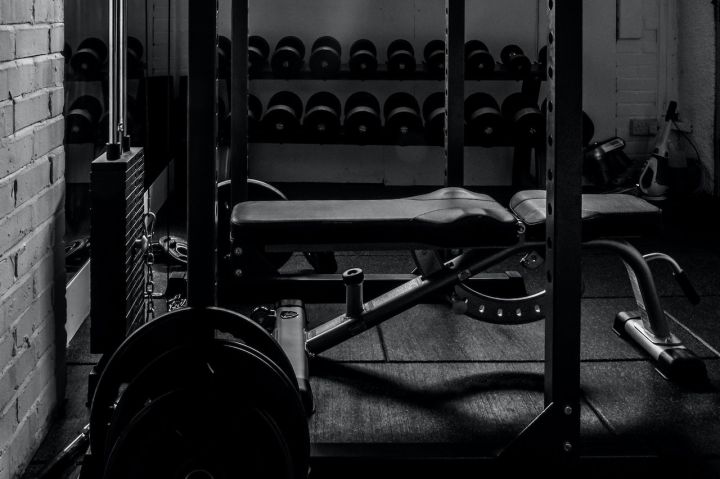Same Barbell Bench Press, Why Is He Better Than You? Understand These Principles And You Will Get Twice The Result With Half The Effort
if you have been working out for a while, you will often hear fitness seniors say that you need to control the centrifugal contraction when training, what exactly is the concept of centrifugal contraction? What is the role of centripetal contraction and isometric? Let's explain it in simple terms today.

Fitness and weightlifting both use many of the same training techniques, and in traditional weightlifting disciplines, one way to significantly alter results is to use the physiological mechanisms of muscle function. This may sound complicated, however, it is not really that difficult.

first, a little bit of science. There are three phases to a typical fitness movement: Centripetal, centrifugal and isometric.
Scientifically speaking.
The centrifugal phase is when the tension supplied to the myofilaments (cross-bridges), actin and myosin in the muscle ganglion is less than the weight or resistance you want to move. In this way, your muscles elongate.
The centripetal phase is when the tension in the cross-bridges is greater than the resistance. In this way, your muscles become shorter.
The isometric phase is when the tension in the cross-bridge is equal to the resistance. Therefore, there is no change in muscle length.

understanding these principles is essential for effective productivity within the body. Strangely enough, muscles are able to carry more weight when we do not have to overcome resistance. Science has shown that we are often able to withstand 120-140% of centripetal weight during the centrifugal phase.
A good example of this is when a man is hanging from a cliff while still attached to a rope. It is much easier to lower him than to pull him up. The explanation for this is that in an upward movement we have to overcome his weight and other additional resistance, including gravitational forces. However, when moving downwards, there is no need to overcome these forces.

muscles function in the same way as an overpass or 'fillet' on a truck - it's hard to drag them in, but easy to get them out. Understanding the basics of these muscle contractions allows us to take similar actions and produce unusual results. The way to achieve this is to make the principle methods behind these movements unusual.
When training in the gym and having seen how many fitness instructors like to train their trainees, one of the basic principles applied is the centrifugal pause. When you want to increase muscle strength, you should make use of centrifugal and isometric phases in your training to be effective in building muscle.

let's take the bench press as an example. During the strength training period it is recommended to do the standard bench press on the first day of the week. During the second bench press session of the week, a centrifugal pause bench press will be used instead of the standard bench press. The trainer starts with a slow downward movement centrifugally towards the chest. The observer counts the downward movement as 3-4 seconds (centrifugal contraction). When the barbell reaches the chest, pause the barbell in front of the chest for 2-3 seconds (isometric) and then push the barbell up with the help of the observer in an explosive upward contraction (centripetal contraction).

the slower movement of the centrifugal phase allows time for more active cross-bridges to engage. This is because muscle strength takes time to train - it cannot happen instantly. By engaging more cross bridges we can increase the training of the whole muscle.
When we pause the barbell, without any movement, the muscles are still under tension and there is a greater number of cross-bridges engaged. It is important to recognise that centrifugal pause exercises have an important role to play in overall strength production. Any workout you do for the second time in the week can be done with the centrifugal pause technique. The centrifugal time should be done slowly and the pause should be between centrifugal and centripetal.

try the centrifugal pause principle with the caveat that your post-workout soreness levels will increase significantly! All that you have in life comes at a price. If you desire strength, then the pain of recovery will be the price.
1, use this method in the early stages of training for basic, heavy weight movements such as bench presses, squats, shoulder presses, push-ups or pull-ups.
2, when using this method, make sure you have a strong, focused assistant or someone to protect you.
3. Keep the reps low when performing centrifugal pause training. For most people, 3-5 reps per set is sufficient, or you can do them on the last few reps of each set, or pick a set specifically to do.
4. Unlike the traditional centrifugal phase, the centrifugal pause should be heavy enough that you can perform a centripetal movement with the help of a spotter.

typical fitness movements have three phases: Centripetal, centrifugal and isometric are techniques that are often used in fitness. Many partners will find out why they do the same movements, some people have such good results and some people have no change? Training has not done a good job, old drivers will be able to see, bench press is not to push up the weight and push, you exercise is muscle, to work on the action to muscle gains.
